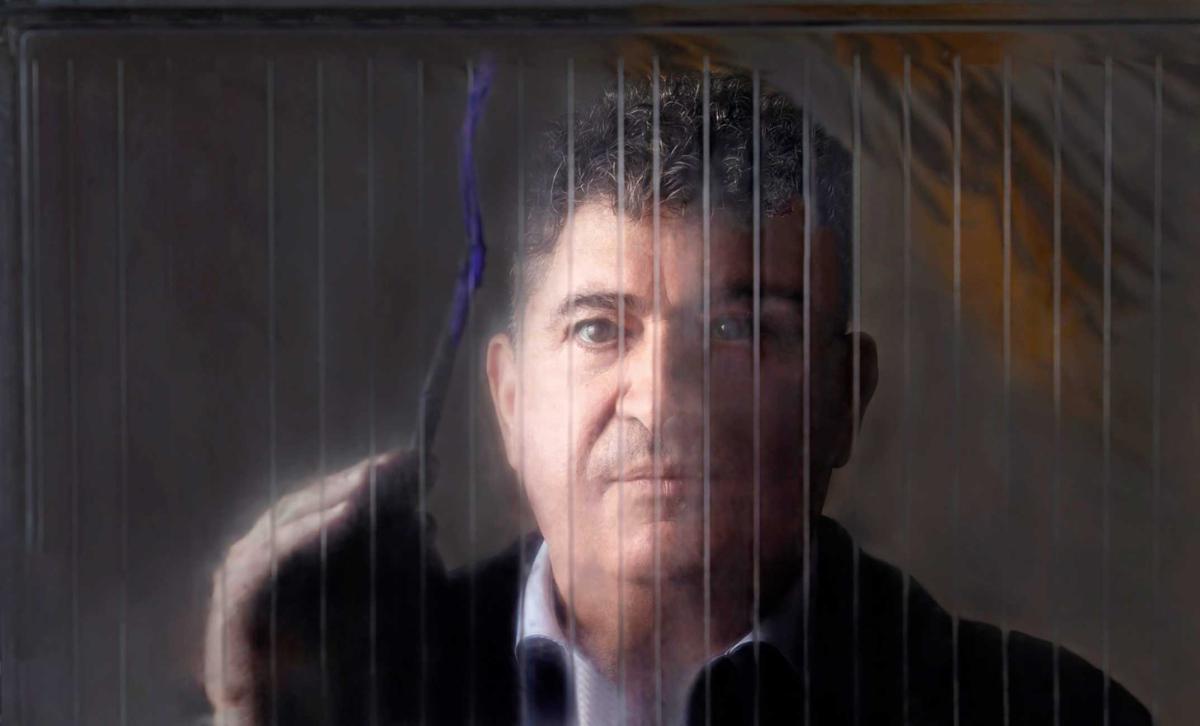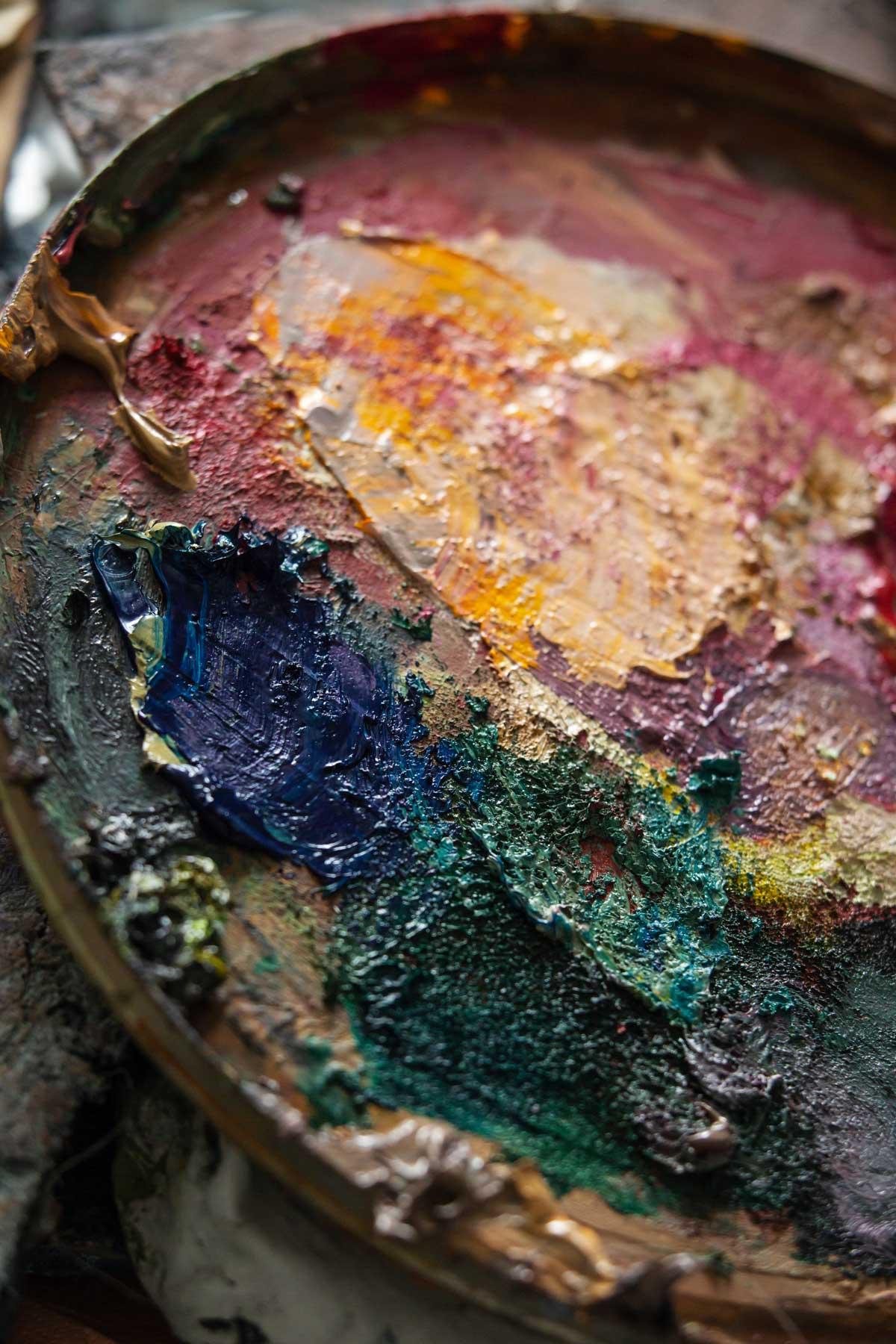





An artist with many solo exhibitions in the country and abroad, a participant in dozens of group exhibitions and art projects, GREDI ASSA has an exceptional influence on the sphere of culture in Bulgaria. He completed mural painting, was a member of the informal art group "The City", established in 1985. Over the years, he was a painting teacher in the "Textile" department at the National Academy of Arts, associate professor of painting, professor in the "Fashion" department and for a certain period its head , deputy rector of the academy, deputy chairman of the National Culture Fund at the Ministry of Culture, member of the Higher Attestation Commission for Fine Arts and Art Studies at the Council of Ministers, executive director of the National Endowment Fund "13 Centuries Bulgaria". And most valuable – a creator of wonderful art.
photography by Diana Lapin
Inspiration is a beautiful word describing some miraculous burst of energy that enigmatically leads to the creation of an extraordinary work. The ancient Greeks and Jews, and not only them, attributed to him a divine origin. For me, the inspiration is the enthusiasm for the work and the desire to respond to the spirit of the time, as I capture it in each moment.
Of course, paintings or drawings, once they leave the studio or gallery, have a life of their own among their new owners. They often give me feedback and I learn how they became the subject of conversations and evaluations or how they fill their owners with feelings and ideas. I am curious to see how my works fit into their new spaces. The interiors in which art connoisseurs live are architectural and aesthetic achievements. The taste for art and the requirements for the living space are always in harmony.
Art radically changes the interior in which it is present. Every work is concentrated intellectual and emotional energy. Art draws the eye of the visitor. It not only decorates the home, but stimulates thinking. The picture brings in a new perspective. It excites, asks questions, sometimes provokes. The picture interacts with the space in which it is placed. Enters into dialogue with other works from the same interior. The works are equally stimulating for the visitor who sees them for the first time and for the collector who has lived with them for a long time but looks at them with interest again and again. Real works never tire of their owners. I've always believed that children who grow up in a home with artwork have an early chance to develop a sense of art that pays off handsomely in their future success.
In many cases, the interior design itself is a work of art. Of course, it is a work of architecture with a utilitarian function, and in that sense it is not pure art, which as a romantic category is aimless. Both art and interior design are thought embodied in some matter. Both give meaning to the space, enriching each other.
I have the privilege of knowing some of the interiors in which my paintings are placed. I must be lucky because I can't remember a time when I was critical of the choice of location for my work or the lighting of it.
"The interiors in which art connoisseurs live are architectural and aesthetic achievements. The taste for art and the requirements for the living space are always in harmony."
It is important that the work stands confidently in the interior. To have enough space to be observed from different points of view. When it comes to interiors with works by several authors, it is also important that the different works interact and refer to each other.
I have felt comfortable in spaces of different styles. The bright space of the white cube of a gallery or the minimalist, high-tech interior also bring me comfort. Both the unassuming but tidy country house and the eclectic Parisian apartment cluttered with heavy furniture, chandeliers and artwork are welcoming.
Undoubtedly, the features of the interior are dictated by its function, and in this sense, the furniture is leading. Of course, it happens that changes are made to the interior - walls, lighting - because of the works of art that will be placed in it. A great example in this regard is the Louisiana Museum of Modern Art, near Copenhagen. The separate halls of the three connected buildings are tailored to the works that will be exhibited in them. The same applies to the landscape layout of the park, created to give the best visibility to the exceptional sculptural display owned by the museum, which is based on the private collection of the industrialist Knut Jensen. When we think of a home, the style of the interior is determined by the choices of its inhabitants, and its realization depends on the interior designer. Contemporary art pieces feel good in any style as long as they are given enough space.
I always take into account the opinion of the designer, because this is a profession that requires competence and professionalism.
The art market anywhere in the world is difficult because it is very competitive. However, in Germany, for example, artists have the advantage that the art market relies on the well-developed museum network. There are more than 500 fine art museums (state, municipal and private) that continuously buy works and set the benchmarks for success in contemporary art with full transparency of their costs. The art market in Bulgaria cannot step on the network of municipal and national galleries, which, if they replenish their funds, do so as a secret conspiracy. There are private galleries that work well in the complex market environment, but it costs them a lot of effort. The market is not structured and due to the lack of unbiased and professional art criticism. Against the background of minor feelings about the appearance of the art market, I would say that I am happy when my works find their appreciators.
"It is important that the work stands confidently in the interior. Contemporary works of art feel good in any style, as long as they are given enough space.'